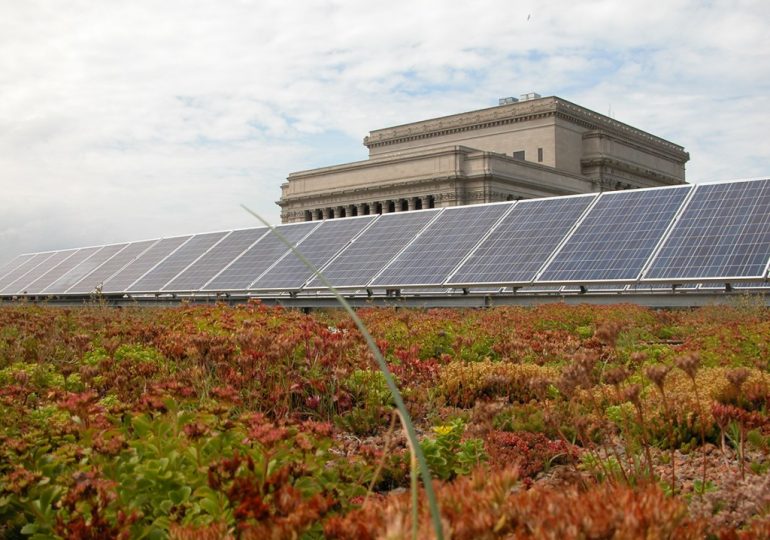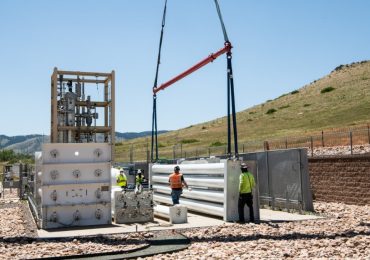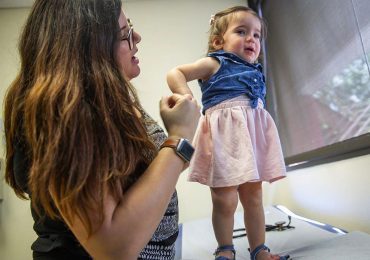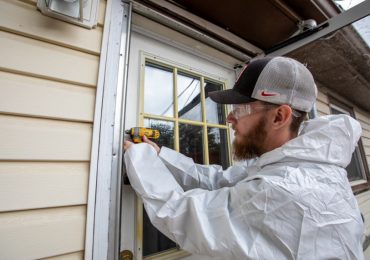State and local governments across the country are finalizing plans and preparing applications for a $5 billion federal climate grant program under the Inflation Reduction Act.
The EPA’s Climate Pollution Reduction Grant (CPRG) program has already distributed almost half a billion dollars to participating states and metropolitan areas to develop or refine local climate action plans. Now, the agency is preparing to award $4.6 billion in competitive grants to help implement big ideas contained in those local plans.
By March 1, states and metropolitan areas must submit “priority” climate action plans, based on community input and prioritizing environmental justice. Those plans set the parameters for the competitive grants of $2 million to $500 million, with applications due April 1.
“The CPRG program is intentionally designed to be broad,” said Rich Damberg, senior policy advisor at the EPA Office of Air Quality Planning and Standards, during a January webinar. “Confronting climate change requires making progress in all sectors of the economy — electric power, transportation, industry, buildings, waste and materials management, and agriculture and natural and working lands.”
Forty-five states and nearly 70 metro areas are participating, including Milwaukee, Indianapolis, Chicago, Des Moines, Detroit, Grand Rapids, Iowa City and Cedar Rapids.
Iowa, Florida, South Dakota, Wyoming and Kentucky each declined $3 million in federal funding for climate planning and are not eligible to compete for the larger grants. Wyoming initially joined the program but then Gov. Mark Gordon decided in the fall to withdraw.
The EPA expects to award 30 to 115 implementation grants of different sizes. Tribes and territories meanwhile compete in a separate sector of the program, accounting for $300 million.
“We are in for an exciting year in 2024,” said Peter Hansel, special advisor for implementation of the EPA Office of Air Quality Planning and Standards, during a January webinar. “We encourage all applicants to collaborate and coordinate as they’re developing the (priority climate action plans).”
The funding can support a new stand-alone measure, like a state agency creating a new decarbonization program, or it can expand work already underway, like a tribe adding more solar and storage to tribal buildings, Damberg explained. Applications can address any sector emitting greenhouse gases or removing carbon from the atmosphere.
Plans and proposals are also meant to reflect the Biden administration’s Justice 40 initiative, the idea that at least 40% of program benefits flow to low-income and disenfranchised communities.
While the implementation grants are meant for relatively short-term projects, the Climate Pollution Reduction Grant program also takes a long lens. Participants are supposed to develop a “comprehensive” climate action plan by fall 2025, with a status report due in 2027.
Milwaukee: Connecting silos
The Milwaukee area had a head start on their action plan thanks to the city of Milwaukee’s own robust Climate and Equity Plan, said Jennifer Sarnecki, principal transportation planner of the Southeastern Wisconsin Regional Planning Commission.
She called the city’s plan a “foundational document” that the regional planning commission is building on for their priority climate action plan, working with surrounding cities including Waukesha, Wauwatosa, West Allis and Mequon, and four counties. Community organizations including Common Ground, the Ethnic and Diverse Business Coalition, the Hmong American Friendship Association and the Southside Organizing Center are also involved.
“We do have decades of experience with transportation and land use planning, environmental planning,” said Sarnecki. “The strength of the program EPA created is to bring all those topics together and allow us to work between silos. I applaud it because it’s giving us an opportunity to look at short-term shovel-ready projects that have already been identified and vetted, while also looking at providing a long-term framework for transformational change. As a planner, that excites me a great deal.”
Energy efficiency is central to Milwaukee’s Climate and Equity Plan and also will likely be featured in the regional climate plan, Sarnecki said. Electrifying transportation and buildings are also priorities. Milwaukee’s plan calls for reaching net zero emissions by 2050, with 45% reductions from 2018 levels by 2030. Transportation will account for almost half of the needed emissions reductions, according to the city’s analysis, with buildings and electricity generation accounting for 17-18% each.
As part of the process, the region is cataloging its greenhouse gas emissions and doing outreach.
“The planning grant has been extremely helpful,” Sarnecki said. “At the staff level, it means being able to attend the technical forums that EPA has developed. We’re building that capacity, and it’s allowed for expanded coordination among our local municipalities. There’s opportunity to have more in-depth conversations with environmental justice populations around this topic, they provide the lived experience. And this is just the start, we’re looking forward to what comes next” with the comprehensive climate plan.
Iowa: Metropolitan collaboration
Renewable energy and Biden administration plans more generally have faced pushback in Iowa, where Republicans control both houses of the legislature and the governorship. While the state is among the five declining to participate in the CPRG program, metropolitan leaders are emphasizing cost savings, collaboration and capacity building, including in ways that benefit rural residents.
Iowa City and Cedar Rapids, just 25 miles apart, are separate metropolitan areas for the purposes of the grant, but they are collaborating on their applications with unified plans, both spearheaded by the East Central Iowa Council of Governments (ECICOG), according to project manager Jennifer Fencl.
“We obviously want to reduce greenhouse gas emissions,” Fencl said, “but from the planning side and our organization side, this is really all about learning, going through this process, getting connected with the types of resources that will be needed in the future to set our communities up for, say, pursuing a solar project or changing out lighting.”
Fencl said they used the $2 million total in planning grants to, among other things, work with the University of Iowa in developing and using an equitable engagement process to collect input from the more than 50 different communities that make up the area. They created a website to explain the process and ask for feedback.
The regional council has long worked with those communities on issues including water quality, solid waste management, and recycling, but they haven’t focused as much on air quality. The grant could present an opportunity to do so, she said.
They’ve used tools developed by the federal government to identify environmental justice areas, but Iowa’s rural landscape means they sometimes overlook marginalized populations since they draw on Area Median Income metrics that become less meaningful in regions with few residents. Hence, Fencl said, the planners are making sure to adequately study and reach out to rural communities and consider projects that will increase their well-being.
“We’ll focus on homeowners, renters and residents of manufactured housing,” she said, noting that leaders can work with the well-known energy assistance program LIHEAP to increase their outreach. “Very often renters and manufactured housing fall through the cracks with these kinds of programs.”
Their climate action plans — while not yet finished — are likely to prioritize energy efficiency and access to electrification, building on new ideas submitted by communities and existing successful programs, Fencl said. Iowa City, for example, has a pilot program helping renters access electric vehicle chargers.
“This is not about any kind of strings attached or mandates or requirements, this is capacity-building,” Fencl said. “There are smaller communities that are interested but just don’t have the resources and connections to do what they want to do. This is a great opportunity to build that capacity.”
Indianapolis: Calls for electrification
The agency spearheading the process for the Indianapolis area released its updated priorities in January, following a series of public events and online surveys.
The list includes repurposing industrial sites for renewable energy, creating more parks, restoring degraded land, increasing energy efficiency of industry, and electrifying government buildings.
Such priorities have not been embraced by Indiana state lawmakers, who have in recent years proposed legislation to bar municipalities from electrification-related measures and to protect the state’s coal industry.
The dichotomy is an example of how federal grants like CPRG can help municipalities and state leaders do work that is not supported by the state’s legislature. Wisconsin — with a Democratic governor and sustainability-focused agencies, but a Republican-dominated legislature — faces a similar situation. The federal grant program can push climate-friendly directions that the legislature has refused to fund, noted Maria Redmond, director of the Wisconsin Office of Sustainability and Clean Energy.
The Indianapolis area’s preliminary greenhouse gas emissions inventory showed that a third of emissions came from commercial electricity generation, a third from mobile combustion (like vehicles), and almost a quarter from stationary combustion. It also showed that Marion County, which includes most of Indianapolis, accounted for 45% of the emissions among 11 counties.
The Central Indiana Regional Development Authority, which is leading the effort, emphasized creating high-quality and high-wage jobs and attracting “high caliber talent” as priorities, as noted in a presentation.
The regional agency has convened stakeholder working groups focused on agriculture and open space, transportation and recreation, electricity and heat, and industrial and technological advancement. In September, representatives did outreach at farmers markets, the Indiana Latino Expo and Car Free Day Indy.
A survey of 480 residents asked what actions by the government would be most valuable in helping reduce emissions. Twenty-four percent asked for funding for increasing home energy efficiency, and 23% wanted funding for residential solar panels. Significant numbers also prioritized composting service and increasing electric vehicle charging infrastructure.
The survey found slightly different top investment priorities among the general public and environmental justice communities. The EJ respondents ranked improving public transit first by a comfortable margin, and renewable energy third. The general public ranked renewables first and public transit second.
Chicago: Regional environmental justice
As in Milwaukee, the Chicago area’s climate plan will build on the city of Chicago’s 2022 Climate Action Plan as well as the Metropolitan Mayors Caucus’ 2021 Climate Action Plan for the Chicago Region, the third such regional plan in the country. The mayors caucus is leading the process for the Chicago region, which includes the cities of Naperville and Elgin; Kenosha, Wisconsin; and part of Northwest Indiana.
The 2021 regional plan calls for decarbonizing energy generation, electrifying and increasing the efficiency of buildings, expanding electric vehicle charging infrastructure, building transit-oriented development and generating electricity from wastewater biogas, among other measures. The plan was developed in collaboration with the National Oceanic and Atmospheric Administration and with guidance from the Global Covenant of Mayors for Climate & Energy, which in 2019 chose the mayors caucus’ Greenest Region Compact as a pilot program on the potential of regional collaboration.
Mayors Caucus director of environmental initiatives Edith Makra echoed other planners in noting that there are different and sometimes contradictory ways that communities can qualify for Justice 40 credit.
“We looked at four tools that identify environmental justice communities in Illinois, and they don’t agree with one another,” said Makra, noting one estimate counted 151 while another said 113.
By all definitions, the Chicago area is home to many neighborhoods struggling for environmental justice. Making sure the climate action plan and grant proposals reflect their needs and hopes requires significant effort and outreach.
“You can’t just call them up and say, ‘We have funding for you, take it,’” Makra noted. “You have to do the preparatory work.”
While environmental justice issues in Chicago are well-known, the federal climate grant program has the potential to serve areas that get less attention and funding.
“It has to be understood to be inclusive of regions beyond the city of Chicago,” said Makra. “There are huge regions in the South suburbs, Lake County, some of our older industrial cities like Elgin and Joliet that are all qualified disadvantaged communities. We’re really excited about the opportunities for further sharpening our knowledge and engaging the environmental justice communities. It’s a huge opportunity.”
The race heats up for massive IRA state and local climate funding program is an article from Energy News Network, a nonprofit news service covering the clean energy transition. If you would like to support us please make a donation.
Leave a comment









